MARCH 18, 2025: This morning, we left Palermo and headed 140 kilometers west toward Trapani, with plans to stop at the Segesta Archaeological Park along the way. Most days in Sicily so far have been overcast, cold, and rainy—but not today.
The first part of the drive followed the northern coast of Sicily. As before, much of the coastal highway was developed between the road and the sea. However, west of Palermo, it felt less urban—buildings were sparser, and the landscape more open. On one side, scraggly mountains rose up, and on the other, the sea shimmered a beautiful turquoise blue. It made for a stunning, scenic drive.
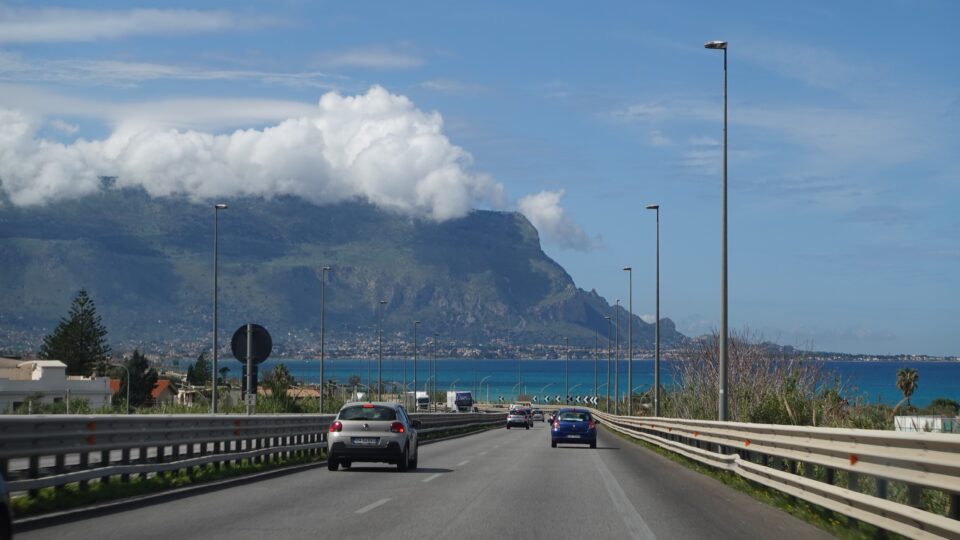

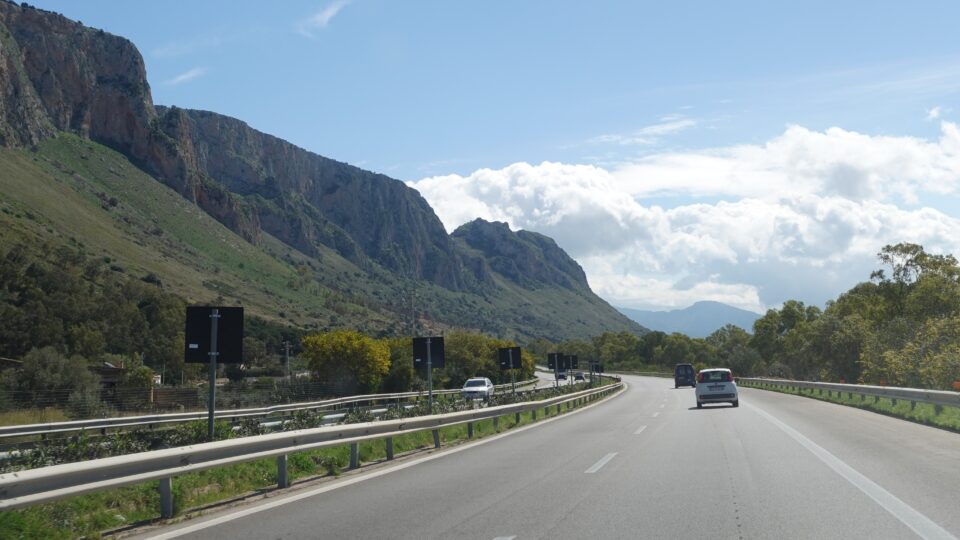
To reach the archaeological park, we eventually turned inland, passing through agricultural land. The scenery kept getting better—lush fields, bright spring wildflowers, and a perfect blue sky dotted with white, fluffy clouds.
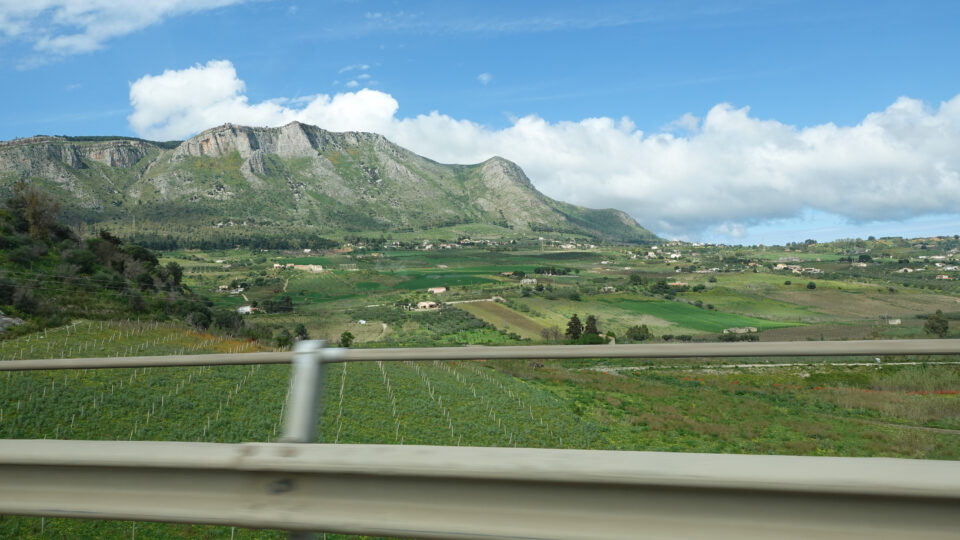

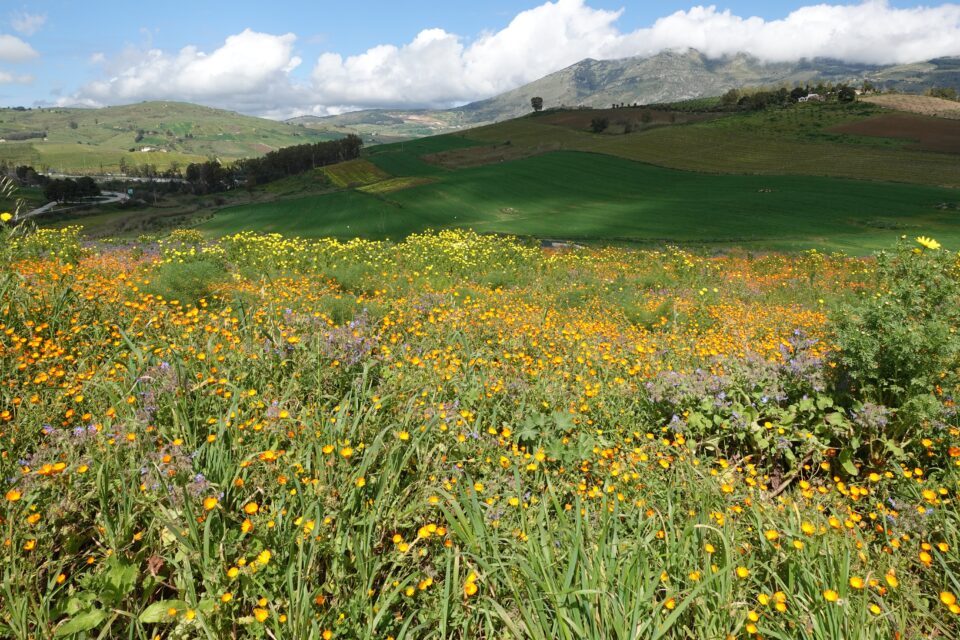
Of all the archaeological parks we visited in Sicily, Segesta was our favorite. Was it the ideal weather? The gorgeous surroundings? Or the fact that it was our first of several archaeological parks on the island? Probably a mix of everything—but either way, it’s a place I’d highly recommend.
Segesta is home to a remarkably well-preserved Doric temple dating back to the 5th century BCE. With its 36 towering columns and dramatic hilltop location, the temple is astonishing. After paying the entrance fee, we walked uphill to see it up close—an impressive sight in both size and setting.



From there, we returned to the entrance and caught the shuttle bus up the neighboring hill to visit the ancient city of Segesta. The main highlight here is the Roman theatre, smaller than the one in Taormina but beautifully situated, offering panoramic views over the countryside all the way to the sea. The ruins were interesting, but what I’ll remember most are the wildflowers—a vivid carpet of orange, purple, white and yellow spread across the hillside.
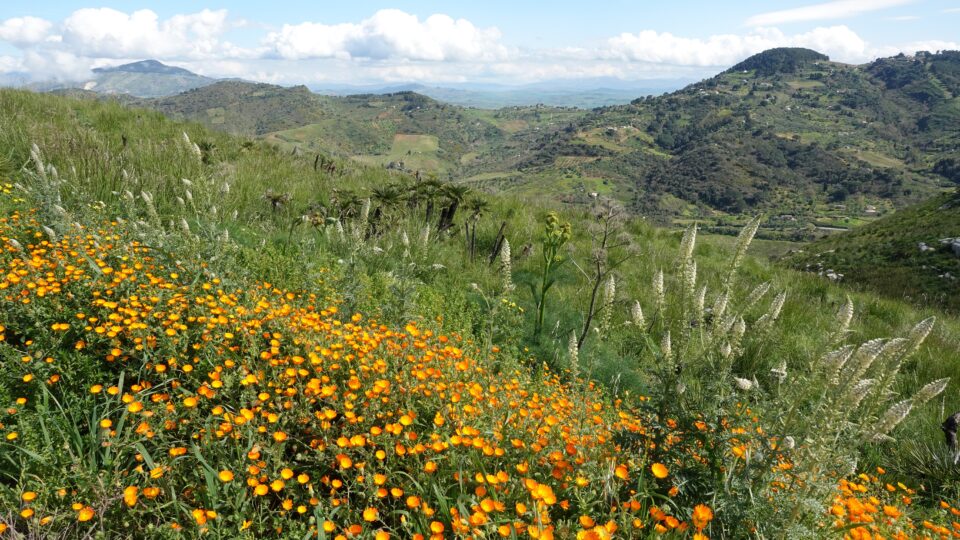
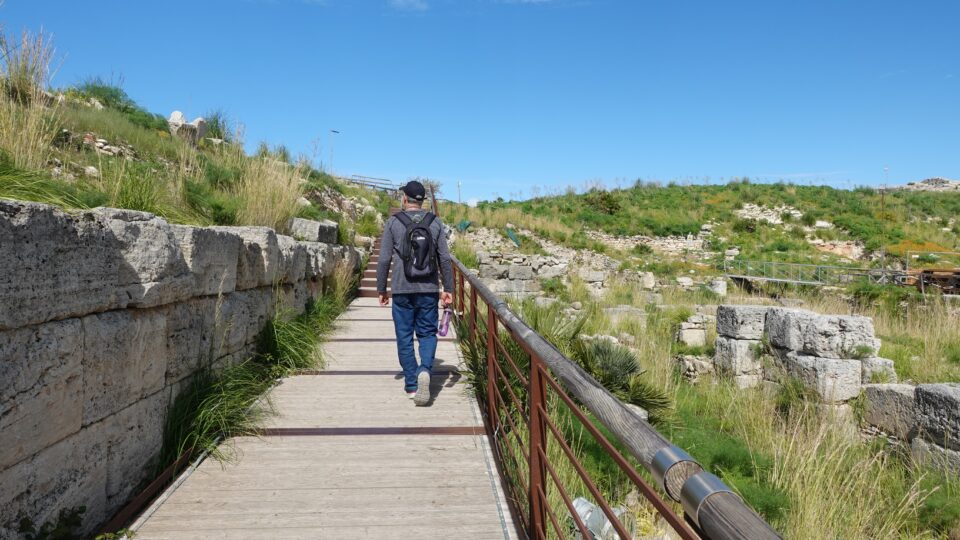
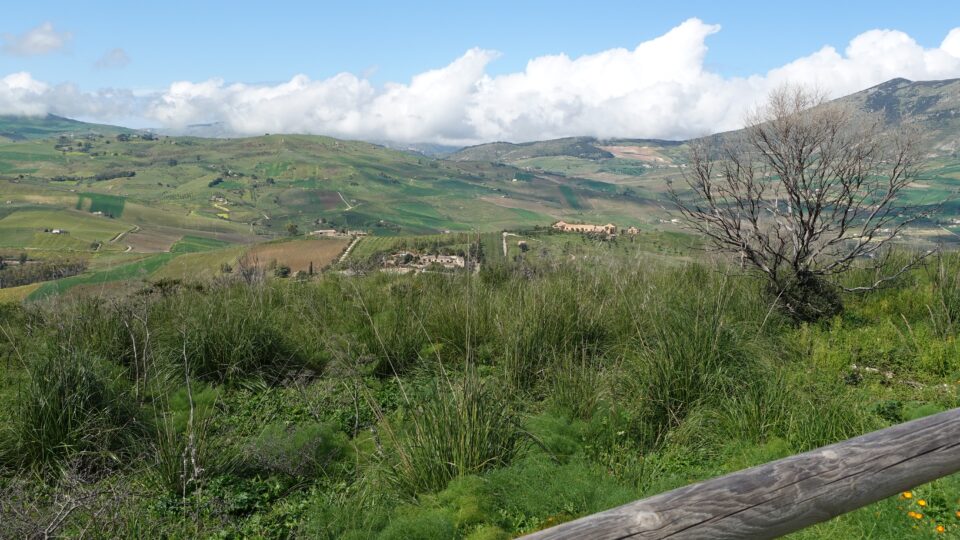


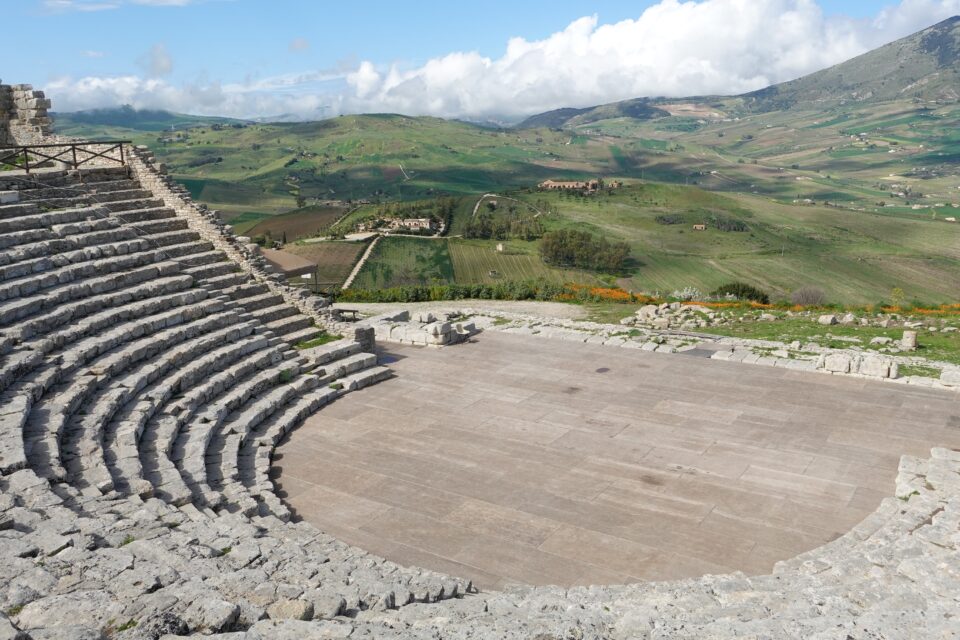
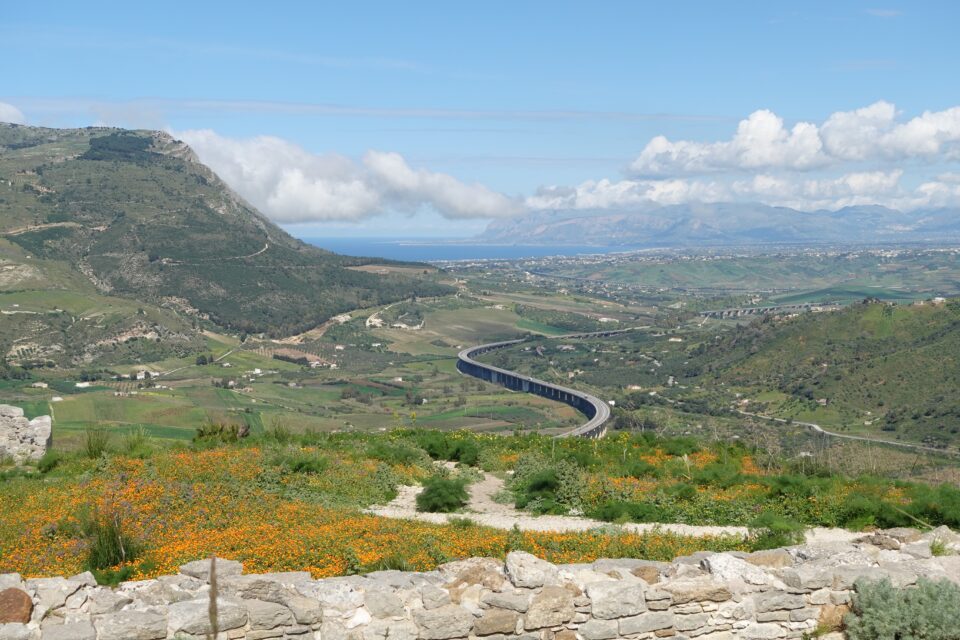
Wild fennel, which grows all over Sicily, was abundant here. It is often used in Sicilian cooking—fresh in salads, soups, and pasta, and the seeds in baking, sausage making, and traditional pasta dishes. It’s commonly found along the hillsides and looks like dill. It is a perennial herb that can grow up to 2 meters (6.5 feet) tall.


Rather than take the bus back, we walked down the hill, enjoying even more incredible views of the temple and surrounding landscape along the way.
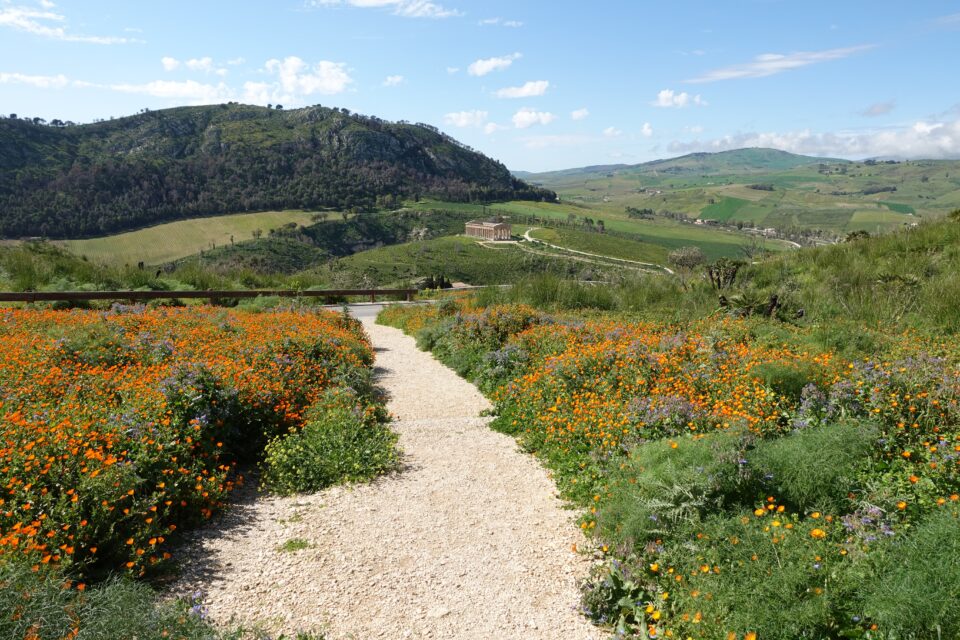
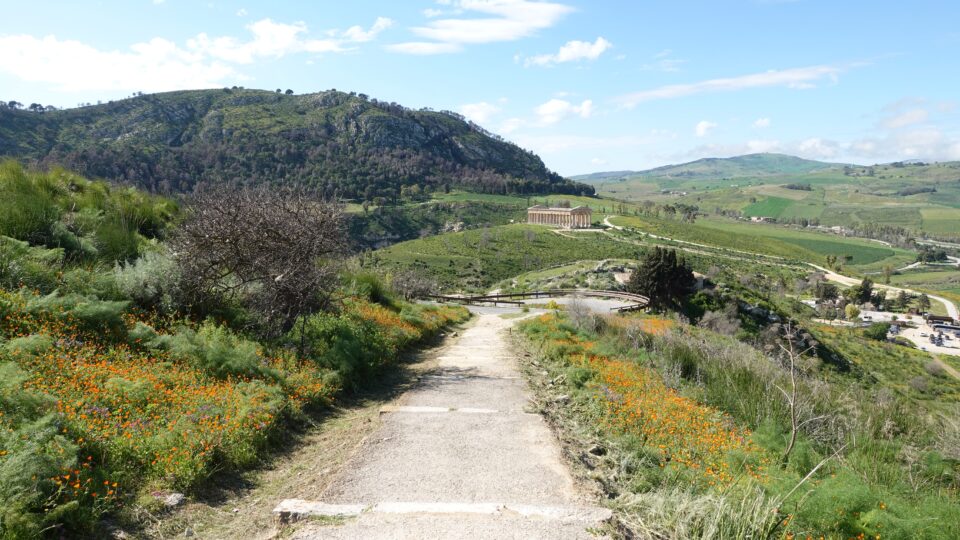
Film buffs might recognize the Segesta temple from The Godfather, in a scene where the Corleone family drives through the Sicilian countryside toward Michael’s ancestral hometown of Bagheria. The family car drives past rolling hills with the ancient temple visible in the background.
After our visit to the archeological park, we finished the drive to Trapani. Our first impression of the city was much more positive than Palermo. Our apartment is located right where the historic old town meets the modern part of the city. Everything felt cleaner and more organized. From our window, we could see the port and, in the distance, the shimmering salt beds for which the area is known.
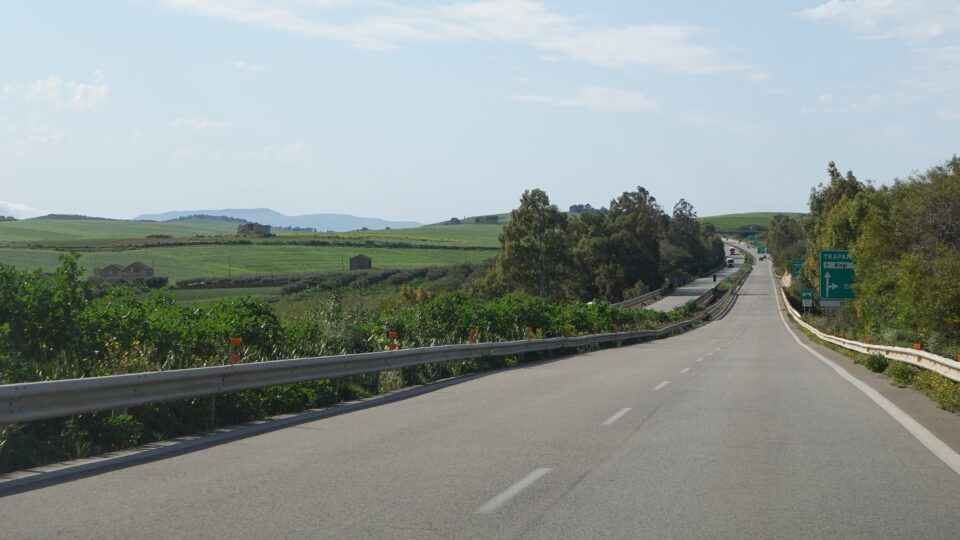
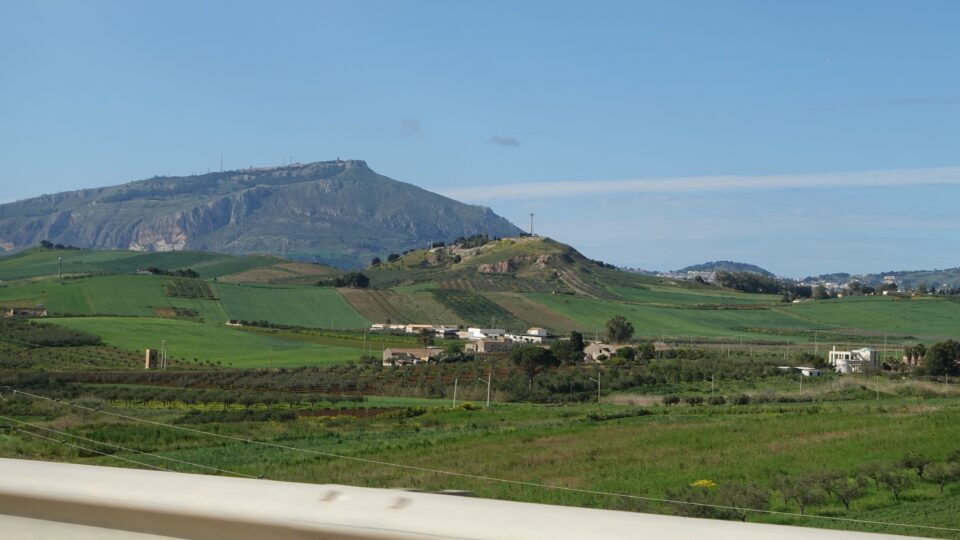
We plan to stay in Trapani for several nights and use it as a base for day trips in the region. Hopefully the weather will stay wonderful.
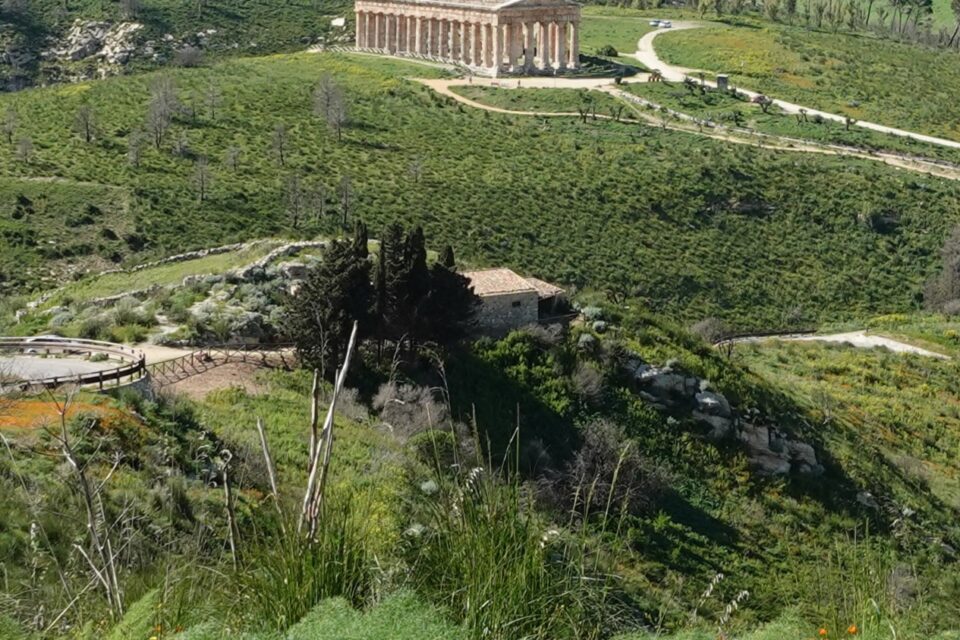
0 comments on “Spectacular Segesta”Add yours →